 I think that it's one of the simplest pastries that we can prepare – especially when we have small hands to help us in the kitchen (they are the ones who know everything and want to do each task alone! :-)) We start from whisking the butter with sugar. Afterwards, what's left is mixing the eggs with sifted flour, a teaspoon of baking powder, and lemon zest with a little bit of lemon juice. We bake the pastry for a short period of time as we want it to be moist and resemble an undercooked brownie. Try it out!
I think that it's one of the simplest pastries that we can prepare – especially when we have small hands to help us in the kitchen (they are the ones who know everything and want to do each task alone! :-)) We start from whisking the butter with sugar. Afterwards, what's left is mixing the eggs with sifted flour, a teaspoon of baking powder, and lemon zest with a little bit of lemon juice. We bake the pastry for a short period of time as we want it to be moist and resemble an undercooked brownie. Try it out!
***
Myślę, że to jedno z najprostszych ciast, które możemy upiec – szczególnie gdy w kuchni towarzyszą nam małe rączki do pomocy (One zawsze wiedzą wszystko lepiej i chcą zawsze same! :-)) W tym przepisie zaczynamy od utarcia masła z cukrem. Później już tylko łączymy jajka z przesianą mąką z łyżeczką proszku do pieczenia i skórka cytrynową z odrobiną wyciśniętego soku. Pieczemy krótko, bo chcemy żeby ciasto było wilgotne i przypominało niedopieczone brownie. Polecam!
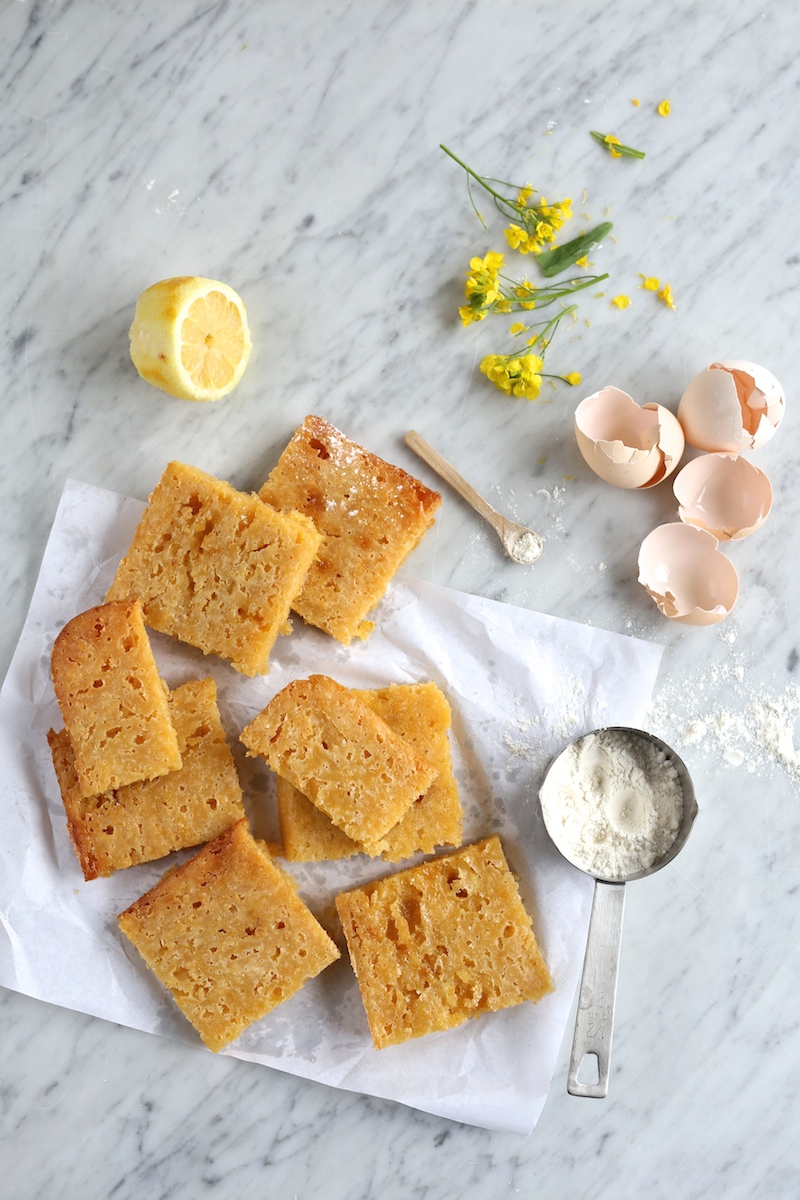
Ingredients:
(baking tray with a size of: 18 cm x 30 cm – you can use a cake tin with a diameter of 23-26 cm )
150 g of wheat flour
150 g of brown sugarlemon zest from 1 lemon + lemon juice from 1/2 lemon
4 eggs
150 g of butter
1 teaspoon of baking powder
cream:
approx. 180 g of curd cheese
2 tablespoons of icing sugar
2 tablespoons of lemon zest
Skład:
(forma o wymiarach: 18 cm x 30 cm, może być tortownica o średnicy 23-26 cm )
150 g mąki pszennej
150 g brązowego cukru
otarta skórka z 1 cytryny +sok z 1/2 cytryny
4 jajka
150 g masła
1 łyżeczka proszku do pieczenia
krem:
ok. 180 g twarogu
2 łyżki cukru pudru
2 łyżki otartej skórki z cytryny

Directions:
1. Whisk the butter with sugar until thick and fluffy. Add eggs and sifted flour with baking powder. At the end, add lemon zest and lemon juice. Stir everything and place it in a baking tray lined with parchment paper. Place the pastry in an oven preheated to 180ºC and bake it for 25 minutes (check if the pastry is ready with a wooden skewer). Take the pastry out of the oven and cool it on a metal cooling rack.
2. To prepare the cream: mix the curd cheese with icing sugar and lemon zest. Blend everything until smooth and creamy. If the texture is too dry, we can add a little bit of lemon juice. Spread the cooled cream on the top of the pastry.
A oto jak to zrobić:
1. Masło ubijamy z cukrem na gładką i puszystą masę. Dodajemy jajka, przesianą mąkę z proszkiem do pieczenia. Na końcu otartą skórkę cytrynową i sok. Całość mieszamy i przekładamy do formy wyłożonej papierem do pieczenia. Umieszczamy w rozgrzanym piekarniku do 180 stopni C i pieczemy przez 25 minut (sprawdzamy drewnianym patyczkiem, czy nie jest surowe). Wyjmujemy z piekarnika i studzimy na metalowej kratce.
2. Aby przygotować krem: twaróg łączymy z cukrem pudrem, otartą skórką cytrynową i blendujemy na gładką masę. Jeżeli konsystencja jest za sucha możemy dodać odrobinę soku z cytryny. Schłodzony krem rozsmarowujemy na wierzchu ciasta.









 I like recipes in case of which I can add the ingredients at a guess, add different spices of the world, and crush everything with a fork to form a smooth mass. These pancakes are all about it. Of course, we can bake them, but I prefer the fried version – remember to do it under some kind of cover so that they don't crumble. A perfect alternative to a regular frikadeller :)
I like recipes in case of which I can add the ingredients at a guess, add different spices of the world, and crush everything with a fork to form a smooth mass. These pancakes are all about it. Of course, we can bake them, but I prefer the fried version – remember to do it under some kind of cover so that they don't crumble. A perfect alternative to a regular frikadeller :)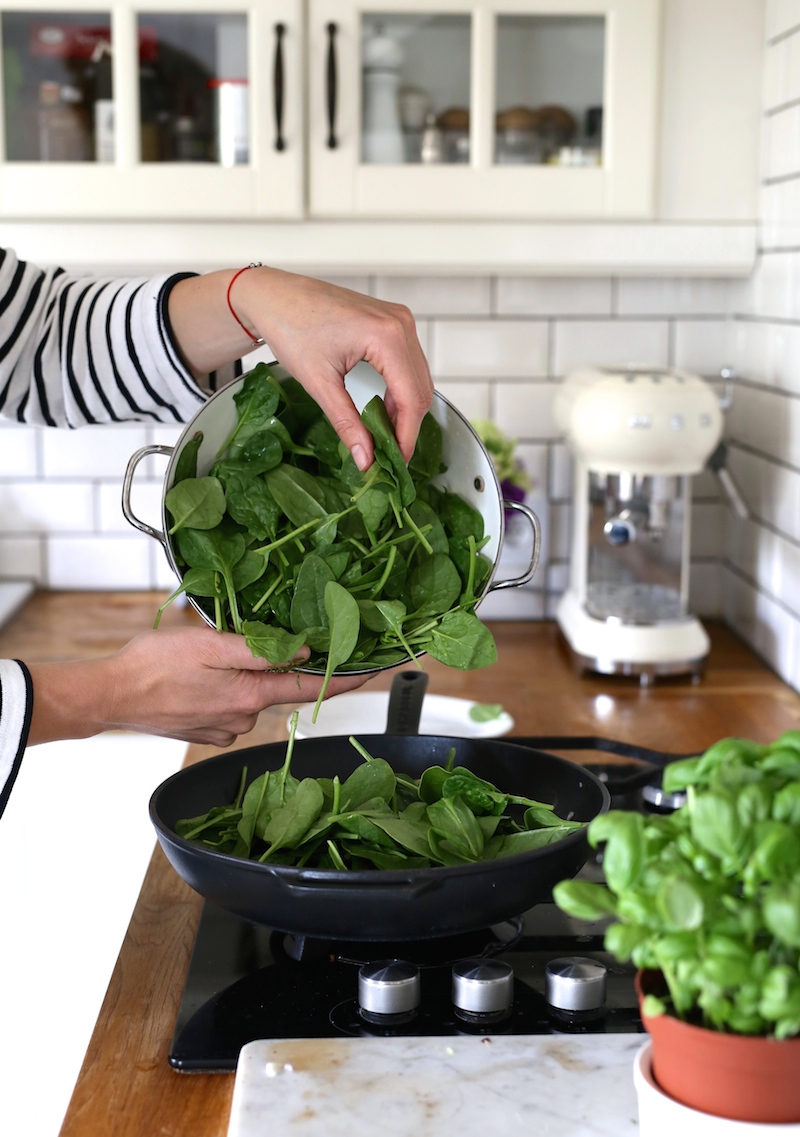

 Fry crushed garlic, chopped onion, and chopped chives in a hot pan. Add spinach leaves and nutmeg. Fry until spinach leaves become twice as small as they were at the beginning. Add cooked quinoa, feta cheese, eggs, and spices. Stir everything until evenly combined.
Fry crushed garlic, chopped onion, and chopped chives in a hot pan. Add spinach leaves and nutmeg. Fry until spinach leaves become twice as small as they were at the beginning. Add cooked quinoa, feta cheese, eggs, and spices. Stir everything until evenly combined.
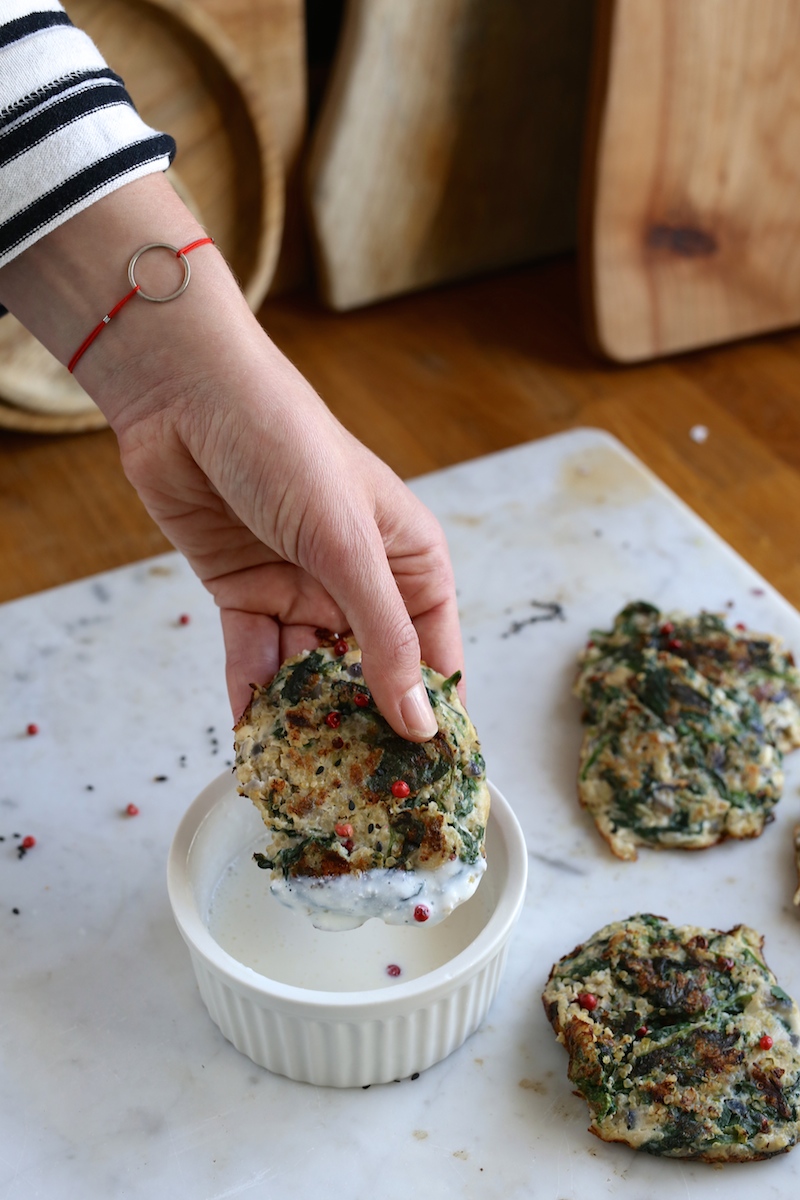


 Directions:
Directions:
 Pour some oil into a tall dish, add scalded egg, mustard, wine vinegar, salt, and pepper. Pulse with a blender for a couple of minutes until dense.
Pour some oil into a tall dish, add scalded egg, mustard, wine vinegar, salt, and pepper. Pulse with a blender for a couple of minutes until dense. Add fresh basil leaves and mix until smooth.
Add fresh basil leaves and mix until smooth.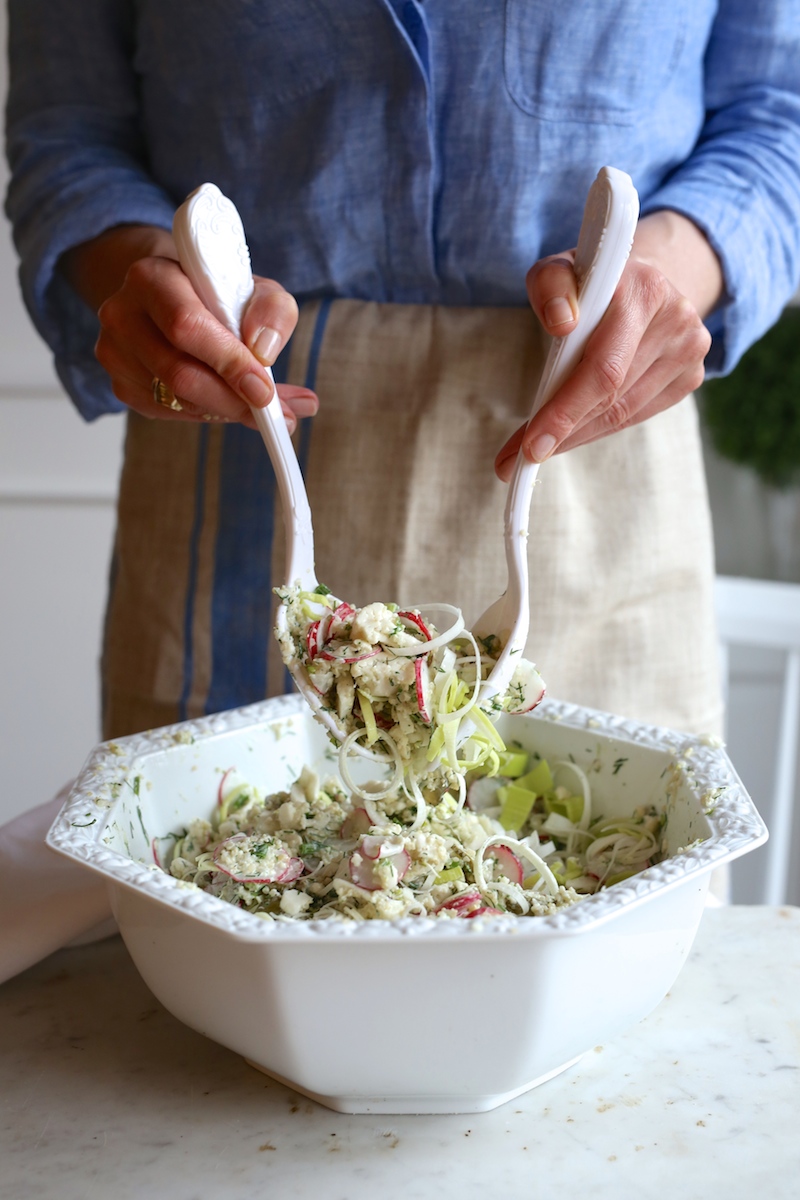 Combine the home-made basil mayonnaise with the salad.
Combine the home-made basil mayonnaise with the salad.
 I love the period of time before Easter. The air is finally fresh after the first spring rain. The smell of soil is discernible. There are different colours of tulips shouting over one another on the local market. Everything is so fresh and innocent – waiting for its time. I buy catkins, hyacinths, daffodils, and sprigs of forsythia. Easter is coming closer…
I love the period of time before Easter. The air is finally fresh after the first spring rain. The smell of soil is discernible. There are different colours of tulips shouting over one another on the local market. Everything is so fresh and innocent – waiting for its time. I buy catkins, hyacinths, daffodils, and sprigs of forsythia. Easter is coming closer…

 Take the cooled shortcrust pastry out of the oven and place it in a greased baking tray. Make a few small holes in the top with a fork. Bake for approx. 15-18 minutes until golden. The oblong baking tray for baking this type of cake possesses a movable bottom which helps to take it out of the tray.
Take the cooled shortcrust pastry out of the oven and place it in a greased baking tray. Make a few small holes in the top with a fork. Bake for approx. 15-18 minutes until golden. The oblong baking tray for baking this type of cake possesses a movable bottom which helps to take it out of the tray. Spread the ready lime and coconut cream over the baked bottom.
Spread the ready lime and coconut cream over the baked bottom.
 Decorate the cake with lime zest and coconut flakes.
Decorate the cake with lime zest and coconut flakes.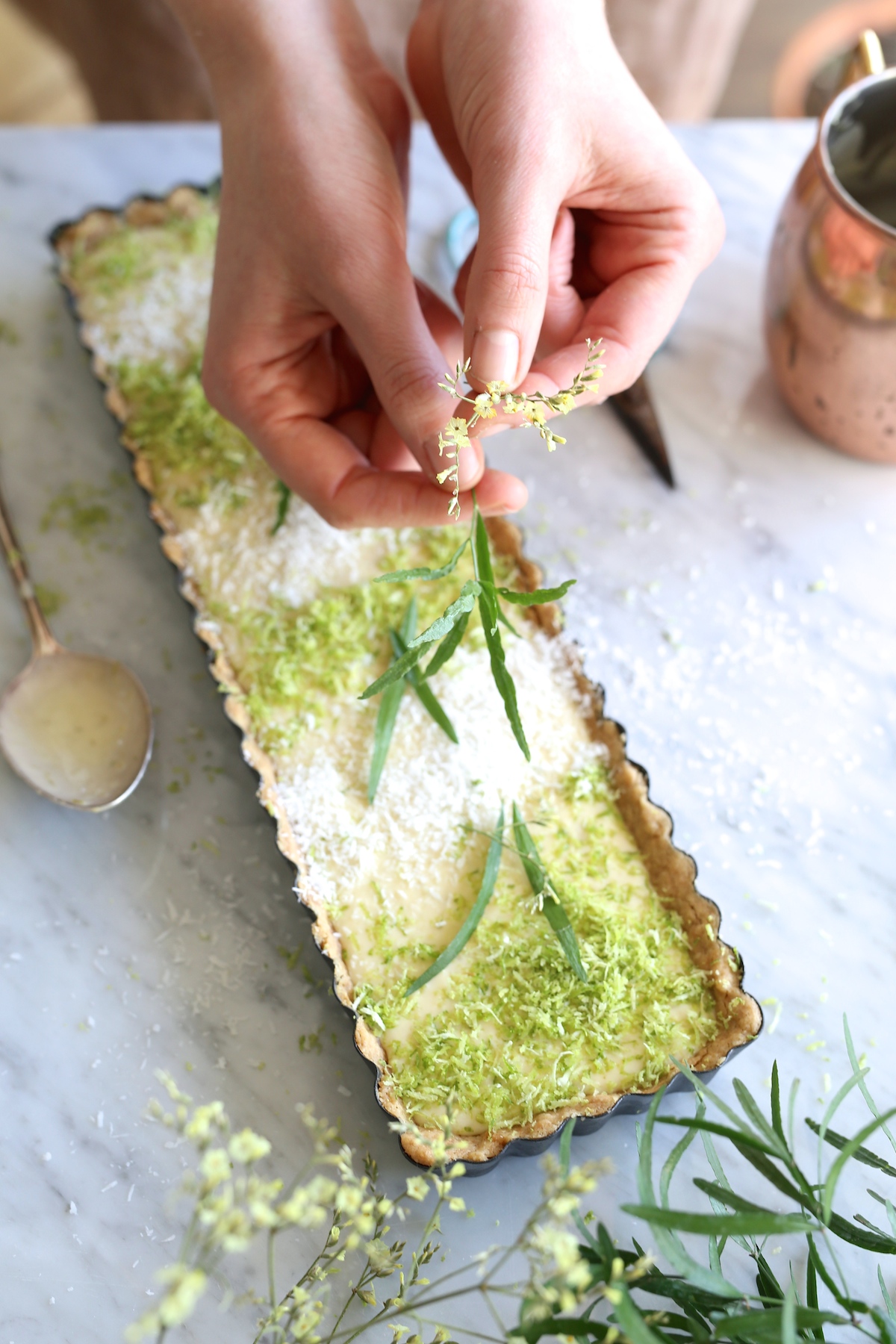 You can decorate the cake with dried flowers.
You can decorate the cake with dried flowers.

 It's widely known that the heart that we put into the preparation of food may change even the simplest meal into a certain kind of art. Everything that surrounds us can set our creativity loose – therefore today, inspired by the first signs of spring, I've got a sweet option with a view to the upcoming Easter…
It's widely known that the heart that we put into the preparation of food may change even the simplest meal into a certain kind of art. Everything that surrounds us can set our creativity loose – therefore today, inspired by the first signs of spring, I've got a sweet option with a view to the upcoming Easter…


 Cut the cooled sponge cake into 3 or 4 layers and sprinkle them with liqueur.
Cut the cooled sponge cake into 3 or 4 layers and sprinkle them with liqueur.
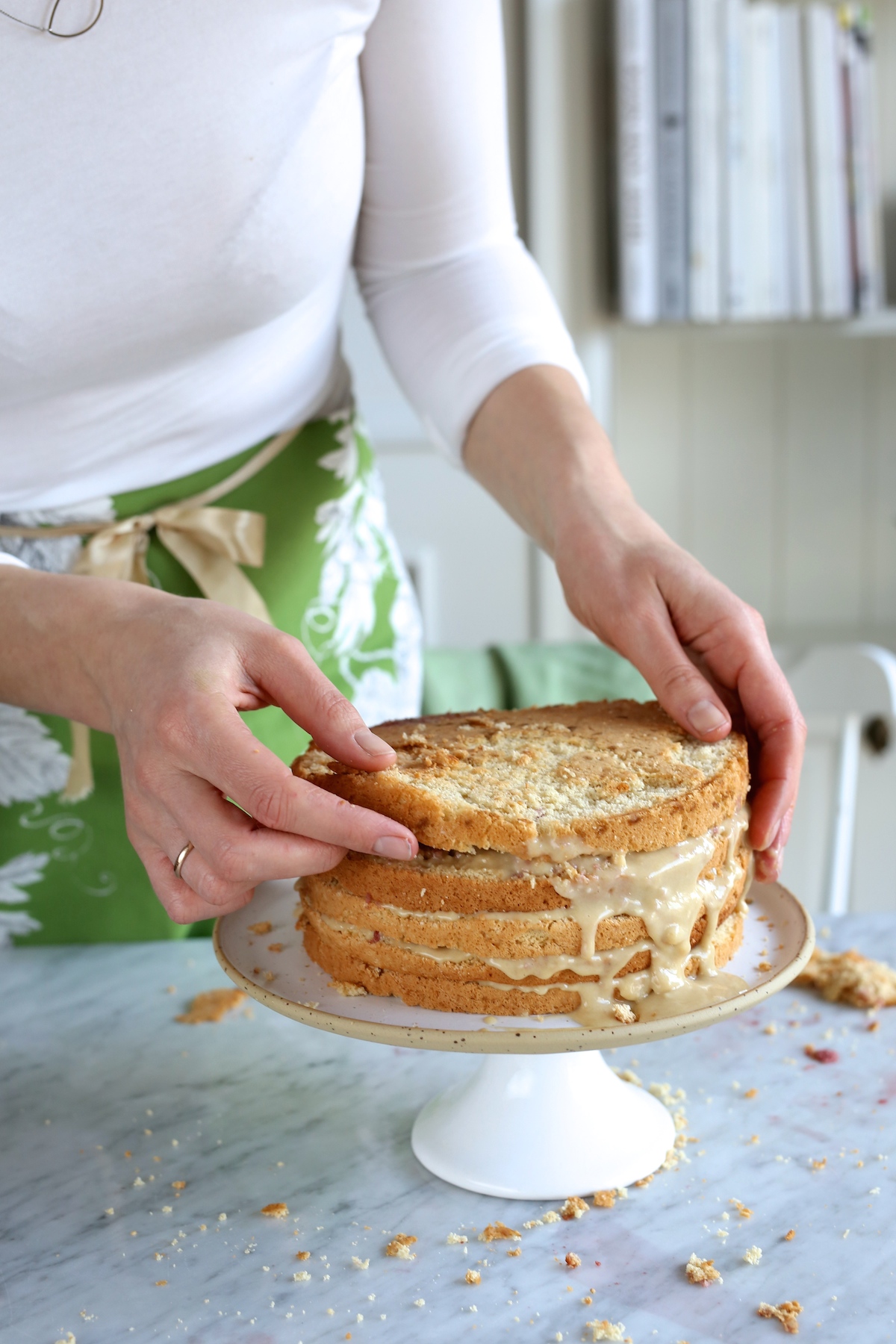
 Spread halvah cream between the layers and finish the top and the sides of the cake with whisked mascarpone cheese.
Spread halvah cream between the layers and finish the top and the sides of the cake with whisked mascarpone cheese.

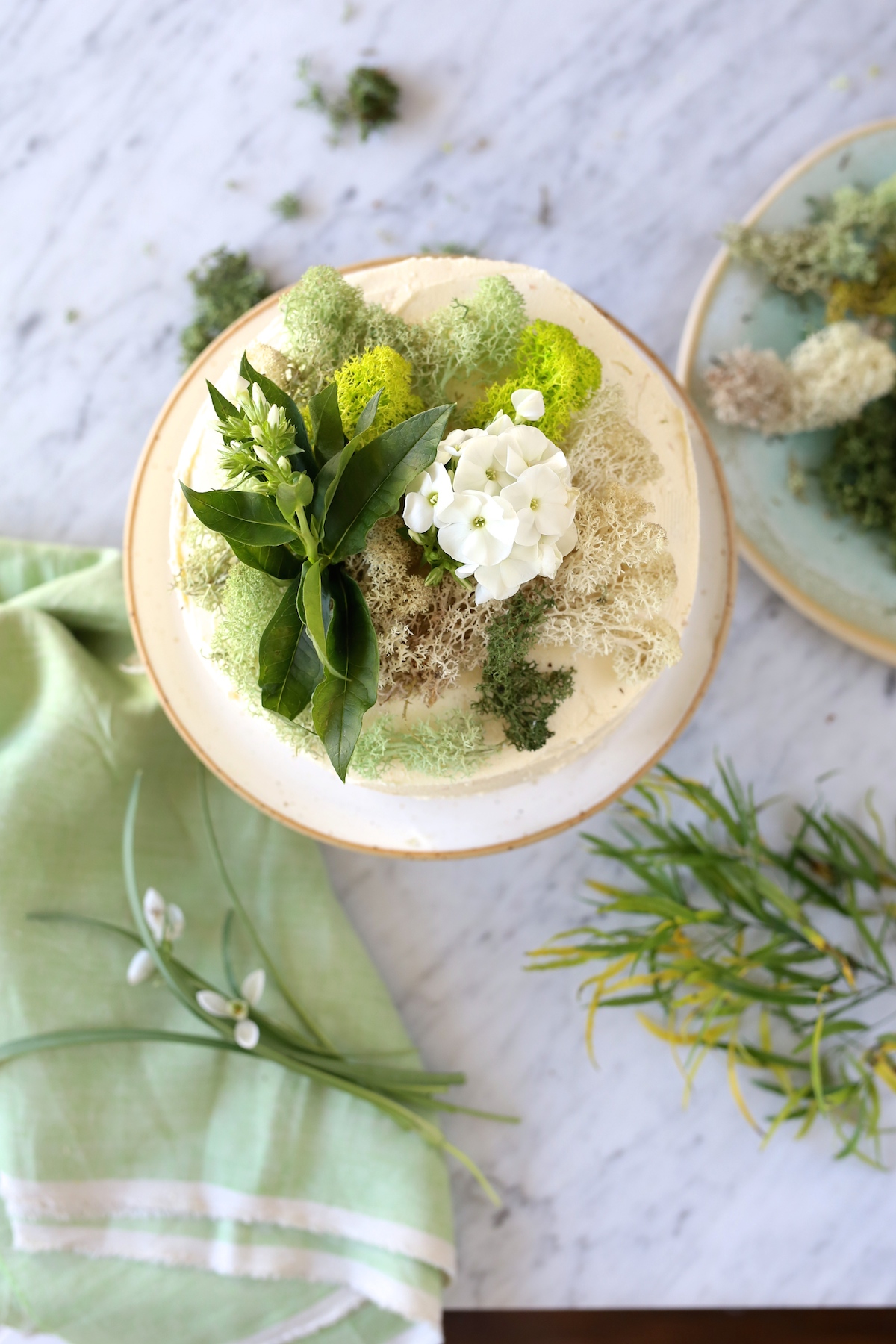

 The cake tastes the best when it's cooled (at least 1-2 hours in the fridge before serving).
The cake tastes the best when it's cooled (at least 1-2 hours in the fridge before serving).
 But are they edible? That is the first reaction to the fact that the cookies are prepared without the use of flour, eggs, and sugar. Yeah, they are edible! Admittedly, it is rather difficult to convince the avid fans of crispy tars with salted caramel to try them, but if you want to make home-made pastries a little bit more diet-friendly or decrease the amount of sugar in sweets consumed by your children then it is worth trying out this recipe!
But are they edible? That is the first reaction to the fact that the cookies are prepared without the use of flour, eggs, and sugar. Yeah, they are edible! Admittedly, it is rather difficult to convince the avid fans of crispy tars with salted caramel to try them, but if you want to make home-made pastries a little bit more diet-friendly or decrease the amount of sugar in sweets consumed by your children then it is worth trying out this recipe!


